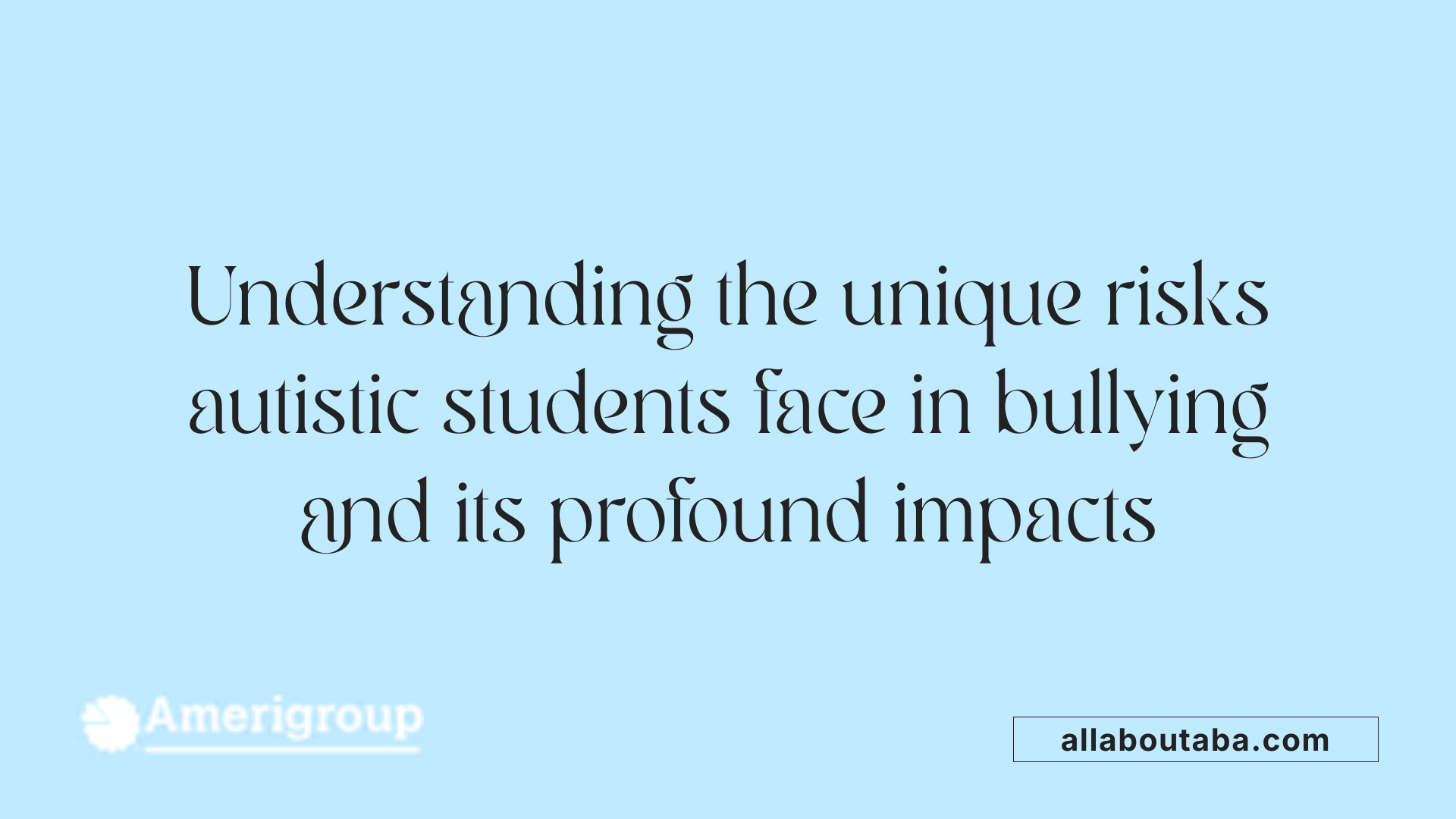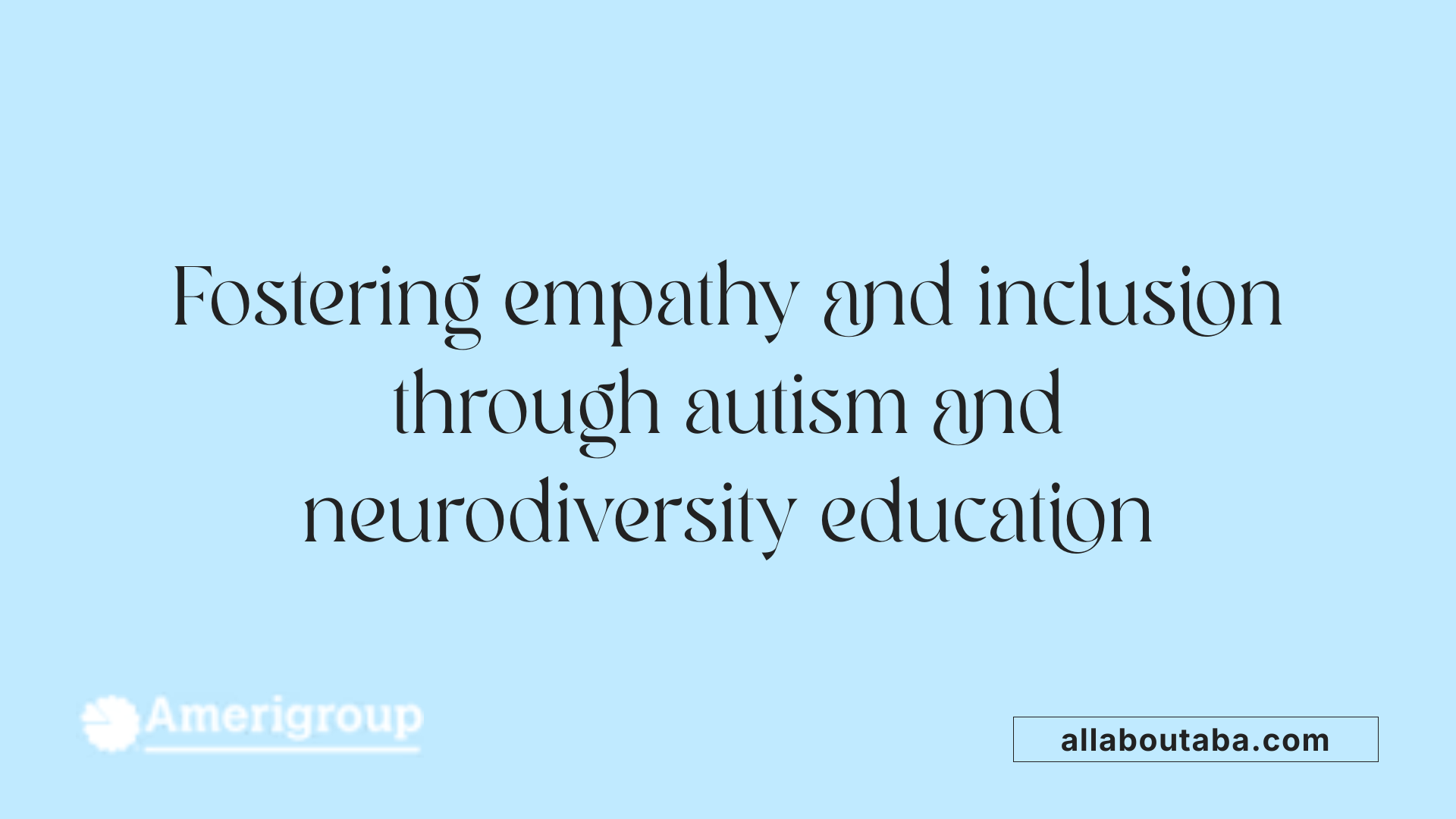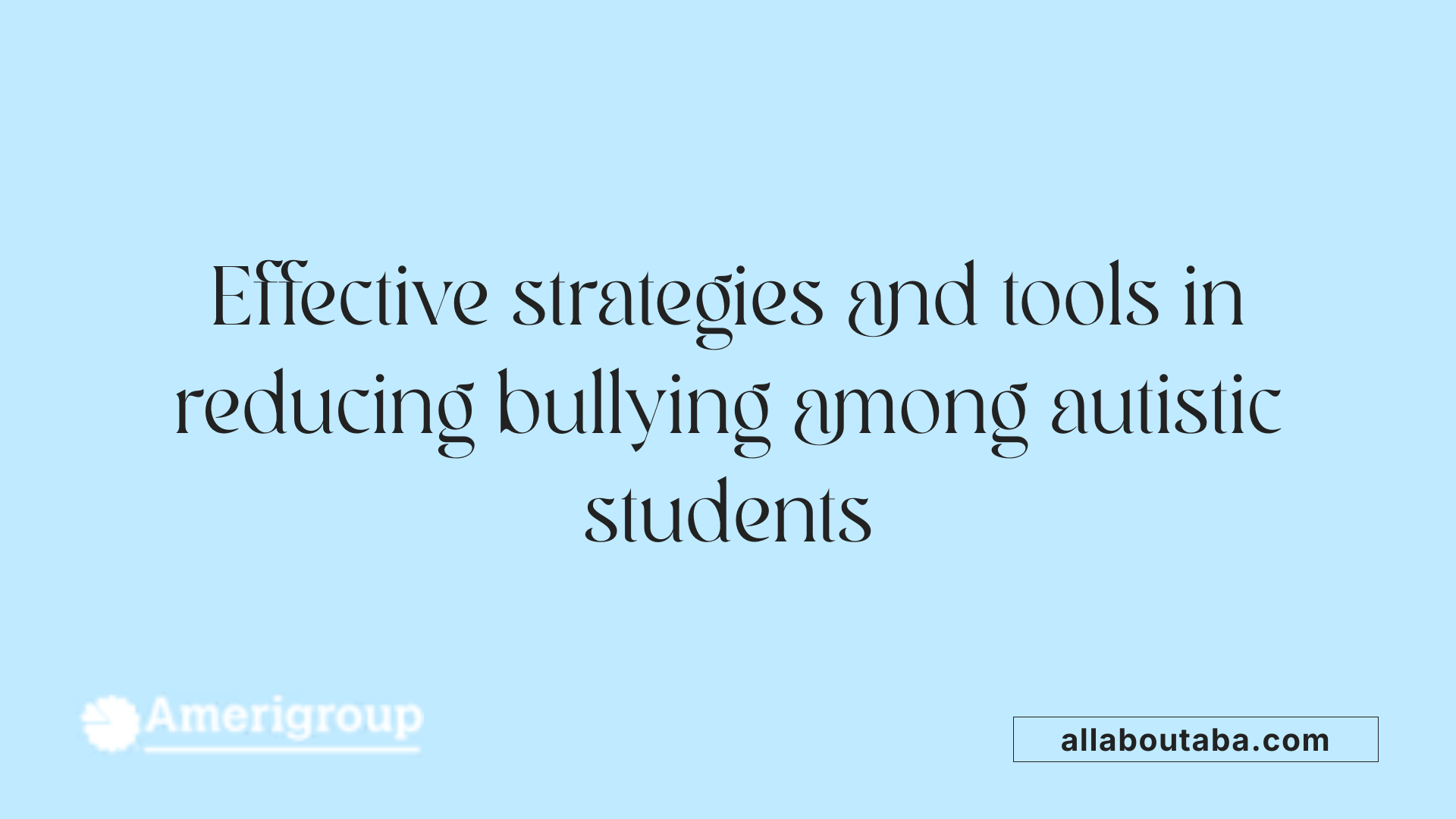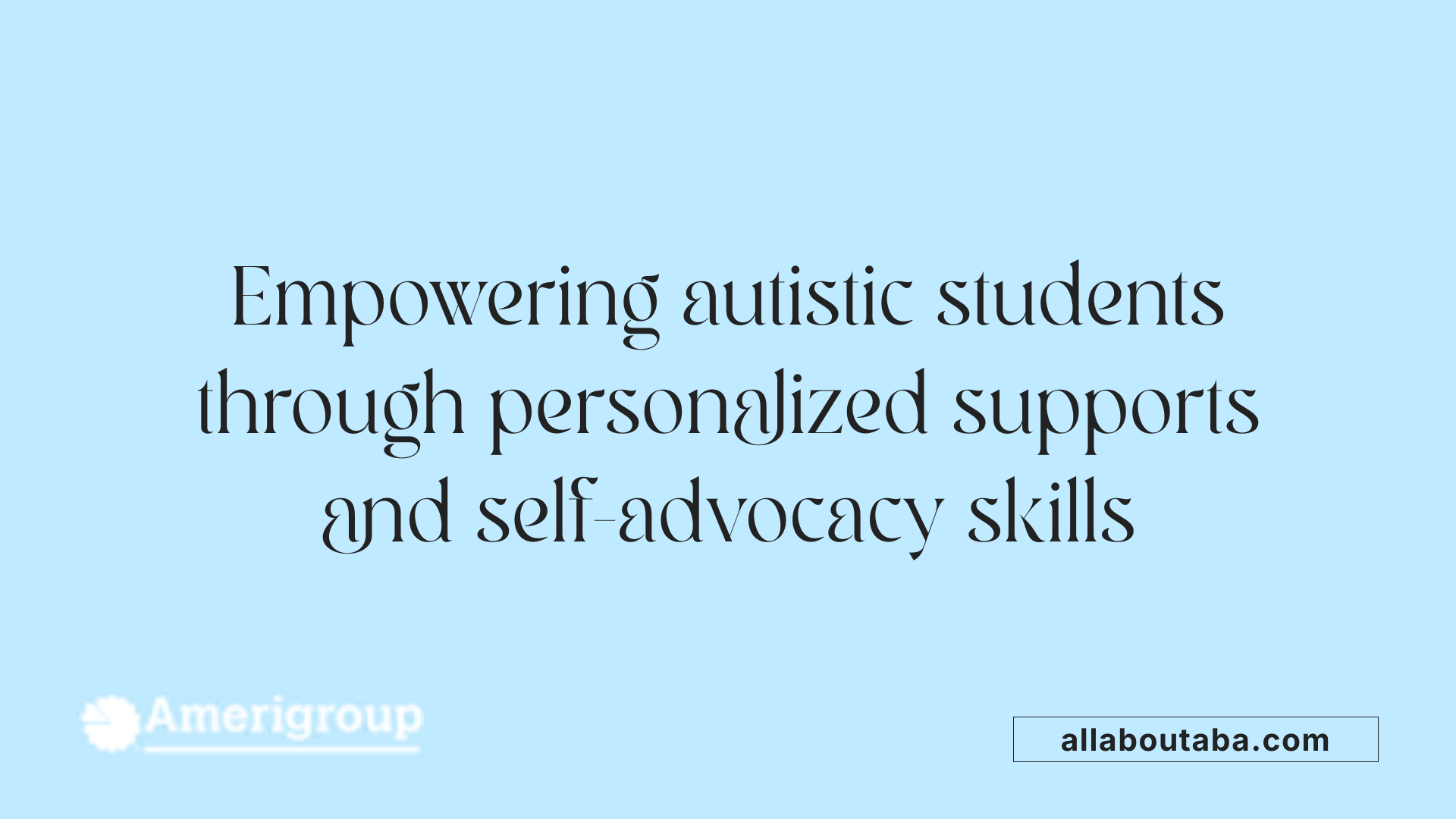Understanding the Challenge of Bullying Among Autistic Students
Bullying poses a significant threat to the well-being and educational experience of autistic students. With studies showing that approximately 63% to 88% of children with autism experience bullying at school, the urgency for schools to implement effective prevention and intervention measures is clear. This article explores comprehensive, evidence-based strategies that schools can adopt to reduce bullying, promote inclusion, and support the unique needs of autistic students, ensuring they have a safe and nurturing learning environment.
The Vulnerability of Autistic Students to Bullying and Its Impacts

Prevalence and Types of Bullying Targeting Autistic Students
Bullying affects a significant portion of autistic students, with studies showing that about 63% of children with autism spectrum disorder (ASD) have experienced bullying. The range of bullying includes verbal harassment, social exclusion, teasing, rumor spreading, and cyberbullying, while physical bullying occurs less frequently. The most commonly reported forms by these students are verbal, relational (social exclusion or manipulation), and cyberbullying.
What Makes Autistic Students Particularly Vulnerable to Bullying?
Children with autism often appear innocent or passive and have difficulties interpreting social cues and intentions, which unfortunately makes them easier targets for bullies. Students with high-functioning autism spectrum disorder (HF-ASD) face challenges in social skills and communication that further increase their risk. Interestingly, those without visible physical disabilities might be bullied even more frequently due to bullies perceiving them as "fairer" targets.
Emotional and Academic Impacts of Bullying on Autistic Students
The long-term effects of bullying on autistic students go beyond immediate distress. It can lead to decreased self-worth and feelings of sadness, anger, depression, and anxiety. These emotional impacts may escalate to an increased risk of suicide. Academically, bullying often results in lower school performance and reduced participation in activities. Other signs include changes in mood and self-image, disrupted eating and sleeping patterns, withdrawal from social situations, and occasional outbursts of aggression.
The vulnerability of autistic students to bullying is tied largely to their social communication difficulties and challenges with understanding peers’ intentions. Recognizing these unique susceptibilities is crucial for developing targeted prevention and support strategies in schools.
Educating School Staff and Students to Build Awareness and Understanding

Why is education about autism and neurodiversity essential in schools?
Training school staff in autism and neurodiversity is crucial because it equips educators with the understanding needed to effectively support autistic students. Such training fosters inclusive environments where autistic students feel safe and valued, which helps reduce the risk of bullying and exclusion. When staff members comprehend the unique challenges and strengths of neurodivergent students, they can implement strategies that accommodate diverse learning and social needs.
Moreover, raising awareness about autism among all students promotes empathy and acceptance. Educated peers are less likely to misinterpret behaviors and more likely to engage in supportive actions, creating a community that discourages bullying and social isolation.
How can schools empower students and staff to recognize and respond to bullying?
Schools can empower both students and staff through structured education and training on identifying and addressing bullying. Teaching students about what behaviors constitute bullying helps autistic students and their peers recognize harmful situations early and feel confident in reporting them.
Bystanders also play a vital role; training students to act as allies by recognizing bullying and notifying adults can prevent escalation. For staff, professional development focuses on spotting less obvious bullying signs and intervening promptly, fostering a safe school atmosphere.
Implementing open dialogues about bullying and neurodiversity ensures that autistic students understand their rights and know how to seek help. Combined, these practices build a proactive culture where bullying is less likely to occur and more effectively managed when it does.
Implementing Evidence-Based Anti-Bullying Interventions

What evidence-based approaches help reduce bullying of autistic students?
Research highlights social-emotional learning and social skills training as the most effective interventions to reduce bullying in schools. These methods focus on enhancing students' abilities to recognize social cues, manage emotions, and interact appropriately with peers. Occupational therapists play a vital role by integrating antibullying strategies into their work with autistic students, helping to address challenges unique to this population.
Techniques such as social narratives and role-playing offer practical ways for autistic students to practice and internalize positive social interactions and responses to bullying. Visual supports further assist by providing clear, accessible cues that aid comprehension and recall. These combined approaches create a supportive environment where autistic students can develop confidence and skills to deflect and manage bullying situations.
How do individualized behavioral assessments aid intervention?
Functional behavioral assessments are essential for uncovering the underlying reasons behind bullying-related behaviors instead of focusing solely on surface actions. By identifying triggers and emotional states prompting aggression or withdrawal, educators and therapists can design targeted strategies that address root causes.
This individualized understanding promotes emotional regulation and improves social competence through tailored support plans. The focus shifts from symptom control to developing adaptive behaviors, which reduces the likelihood of bullying incidents and promotes better integration into school communities.
The Role of Social Narratives, Role-Playing, and Visual Supports
Using social narratives allows students to understand social situations by providing clear, structured stories outlining expected behaviors and responses. Role-playing offers safe practice environments to rehearse these skills actively, increasing readiness to handle real interactions.
Visual supports, including charts, cue cards, and diagrams, help anchor these lessons by making abstract social concepts more concrete. This multi-modal approach ensures that autistic students receive information in ways that best fit their learning styles, improving both comprehension and retention.
Together, these evidence-based interventions form a comprehensive framework that supports autistic students not only in reducing bullying but also in fostering social growth and emotional well-being within the school setting.
Role of Individualized Education Programs and Self-Advocacy Training

How can IEPs be used to support bullying prevention for autistic students?
Individualized Education Programs (IEPs) serve as an essential framework for supporting autistic students in bullying prevention. By incorporating specific goals related to social interaction, speech development, and self-advocacy, IEPs provide tailored strategies that address each student's unique needs. These may include creating individualized safety plans, implementing modified monitoring of student interactions, and using social stories to prepare students for potential bullying scenarios. Clearly defined procedures within the IEP ensure that staff can respond promptly and effectively when bullying incidents arise, fostering a safer school environment.
What self-advocacy and coping strategies are effective for autistic students?
Training autistic students in self-advocacy is crucial for empowering them to handle bullying situations confidently. Strategies such as teaching students to agree with teasing or use scripted responses help defuse potential conflicts by disarming bullies and reducing reinforcement of negative behaviors. One example is the CALM approach, an evidence-based program that guides students step-by-step to recognize stress signals, assert themselves appropriately, face bullies calmly, and communicate non-confrontationally. Beyond CALM, role-playing, social narratives, and repeated practice cultivate adaptive skills that improve students’ capacity to respond effectively and maintain emotional regulation during challenging social encounters.
Use of specific programs like CALM
The CALM approach, developed specifically for autistic learners, focuses on four core skills: recognizing stress, asserting oneself, facing bullies, and using scripted, calm communication to manage bullying encounters. This program empowers students by giving them practical tools that build confidence and reduce victimization. When integrated into the broader IEP goals and combined with staff training and peer education, CALM enhances students’ abilities to handle bullying proactively, contributing to an inclusive and supportive school culture.
Parental Engagement and Legal Protections

What role do parents play in addressing bullying of their autistic children?
Parents serve as the primary advocates and supporters for their autistic children facing bullying. They should first listen carefully, believe their child’s account, and reassure them that bullying is not their fault. Documenting bullying incidents is crucial; it creates a record to share with school personnel and helps track patterns that require intervention.
Proactive communication with teachers, administrators, and school staff helps ensure the child’s safety and that appropriate measures are taken. Parents are also encouraged to teach their children assertiveness and self-advocacy skills at home—these skills empower children to recognize bullying, respond effectively, and express their needs.
Additionally, parents can advocate for comprehensive anti-bullying policies and support the development of Individualized Education Program (IEP) goals that incorporate bullying prevention and social skill development, ensuring the child’s unique needs are addressed.
What legal safeguards exist to protect autistic students from bullying?
Several federal laws protect students with autism from bullying and harassment, mandating that schools provide a safe, non-hostile learning environment. Key statutes include:
| Law | Year | Description |
|---|---|---|
| Rehabilitation Act (Section 504) | 1973 | Prohibits discrimination based on disability in federally funded programs. |
| Americans with Disabilities Act (ADA) | 2008 | Ensures equal access and prohibits disability discrimination in public entities, including schools. |
| Individuals with Disabilities Education Act (IDEA) | 2004 | Requires free appropriate public education tailored to individual needs and protects against harassment. |
Bullying of children with an Individualized Education Program (IEP) can be legally considered harassment and may constitute a crime. Understanding these protections empowers parents and schools to demand prompt investigations and suitable interventions.
Legal frameworks also support the incorporation of anti-bullying strategies in school policies and IEPs, allowing parents to collaborate with educators to safeguard their child's educational experience and well-being.
Applied Behavior Analysis (ABA) Therapy and Its Contribution to Bullying Prevention
What is Applied Behavior Analysis (ABA) therapy and how does it help individuals with autism?
ABA therapy is a scientifically supported method that uses principles of learning and behavior to assist autistic individuals in developing important skills. It focuses on improving communication, social interactions, and daily living abilities while working to reduce challenging behaviors. By applying techniques like positive reinforcement, ABA creates individualized plans that help increase independence and enhance quality of life for these individuals.
Who typically provides ABA therapy and what qualifications do they have?
ABA therapy is delivered by trained professionals including Board Certified Behavior Analysts (BCBAs), Board Certified Assistant Behavior Analysts (BCaBAs), and Registered Behavior Technicians (RBTs). BCBAs are responsible for designing and overseeing the therapeutic plans, while BCaBAs and RBTs implement these plans under supervision, providing direct support to individuals.
In what ways are ABA therapy programs individualized for clients?
Programs are tailored after detailed assessments of each individual's unique strengths and needs. Treatment goals are measurable and designed to be applicable in natural settings like home and school. Ongoing data collection allows for adjustments to maximize effectiveness. Collaboration among therapists, families, and educators ensures consistency and relevance.
What outcomes can families and individuals expect from engaging in ABA therapy?
Engaging in ABA therapy typically leads to meaningful gains in communication skills, social interactions, and adaptive behaviors. It also helps reduce problem behaviors that may hinder learning and social acceptance. Families often notice increased independence and a better overall quality of life, especially when therapy includes naturalistic teaching and active parental involvement.
Comprehensive School-Wide Policies and Supportive Environments
What responsibilities do schools have regarding bullying of autistic students?
Schools are legally and ethically obligated to create safe and inclusive environments free from bullying for all students, including those with autism. Federal laws such as the Rehabilitation Act, ADA, and IDEA require schools to ensure students with disabilities do not face harassment or hostile conditions. This responsibility includes immediate adult intervention during bullying incidents, thorough reporting systems, and accessible anti-bullying policies that clearly communicate zero tolerance for harassment. Creating a culture where bullying is actively discouraged and reporting is encouraged helps protect vulnerable students and promotes equity.
What components are essential in effective school-wide bullying prevention programs?
Effective approaches incorporate multiple layers of intervention. Universal policies set the tone for school behavior, outlining clear expectations against bullying. Classroom interventions teach students social skills and how to act as responsible bystanders who recognize and report bullying. Individualized supports embedded in IEPs provide tailored social, communication, and self-advocacy skills training to students with autism, including role-playing and visual aids. Staff training is critical so educators and support personnel can identify bullying early and implement evidence-based strategies, such as social skills development programs and the CALM approach.
How can schools foster acceptance and supportive networks?
Fostering a culture of tolerance begins with education through lesson plans that promote respect and understanding of neurodiversity. Encouraging positive peer relationships, such as helping students develop at least one supportive friendship outside the classroom, yields significant benefits in emotional wellbeing. Bystanders play a pivotal role by intervening or reporting bullying when they witness it, acting as protectors for autistic students. Schools that actively teach students about recognizing bullying behaviors and encourage inclusive attitudes help build supportive environments where all students feel valued and safe.
Creating Inclusive and Safe Schools for Autistic Students
Reducing bullying of autistic students requires a multifaceted approach that combines education, evidence-based interventions, individualized supports, and strong legal protections. Schools must commit to understanding neurodiversity, training staff and students, implementing proven social-emotional and behavioral strategies, and incorporating bullying prevention in individualized educational plans. Parental advocacy and clear legal frameworks further empower families and schools to maintain safety and respect. Emphasizing tolerance, acceptance, and proactive bystander engagement cultivates a school culture where autistic students can thrive socially and academically, free from the harm of bullying.
References
- Bullying and Autism: Effective Anti-Bullying Practice
- Antibullying Interventions for Autistic Students: A Systematic ...
- To Prevent Bullying of Students with Autism, Training is Key
- Take a stand against bullying
- Bullying and Children with Autism: How to Help Your Child
- Preventing and Addressing Bullying of Students with ASD
- Evidence-Based Interventions for Students on the Autism ...
- Preventing and Addressing Bullying - ASAT Online
- Applied Behavior Analysis (ABA)
- Understanding Your Child's ABA Therapy Providers







